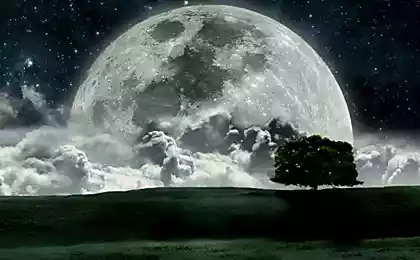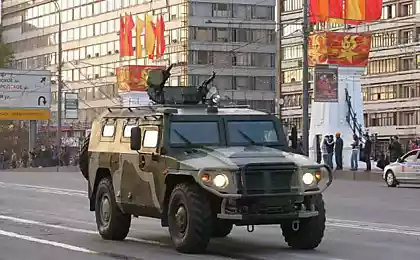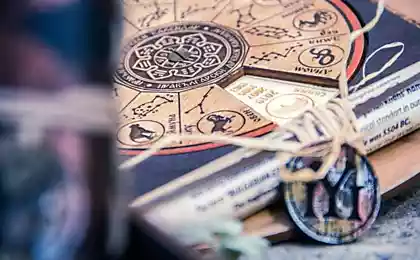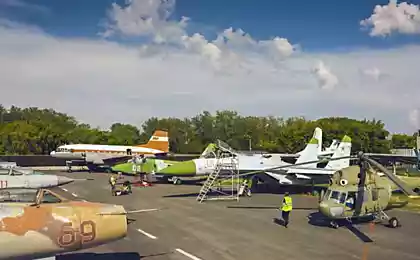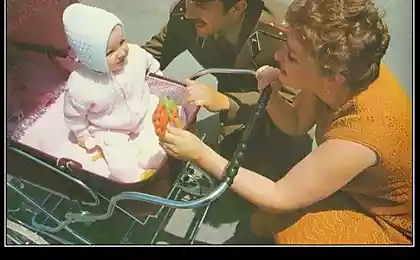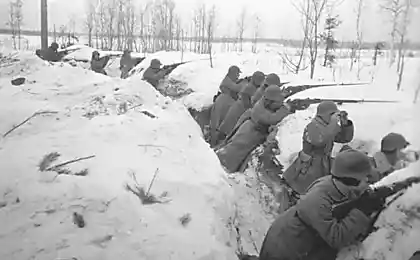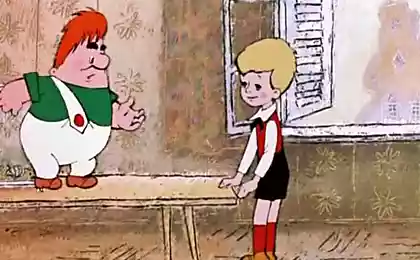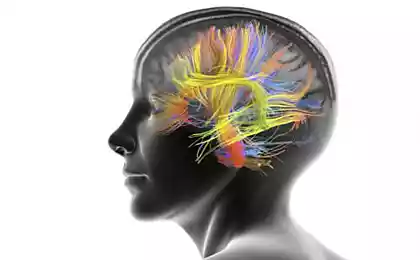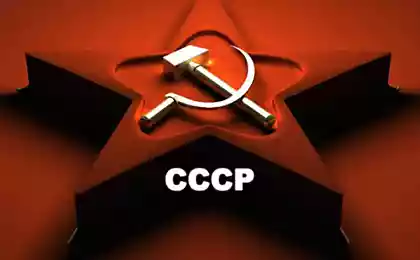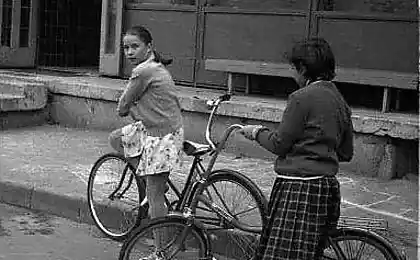1517
The Soviet period
Youth. Holiday House Plant Moscow factory "Elektrokombinat" in Kalyazin, 1932.
In the background - Trinity Monastery, caught in a flood zone in connection with the creation of the Uglich Reservoir.
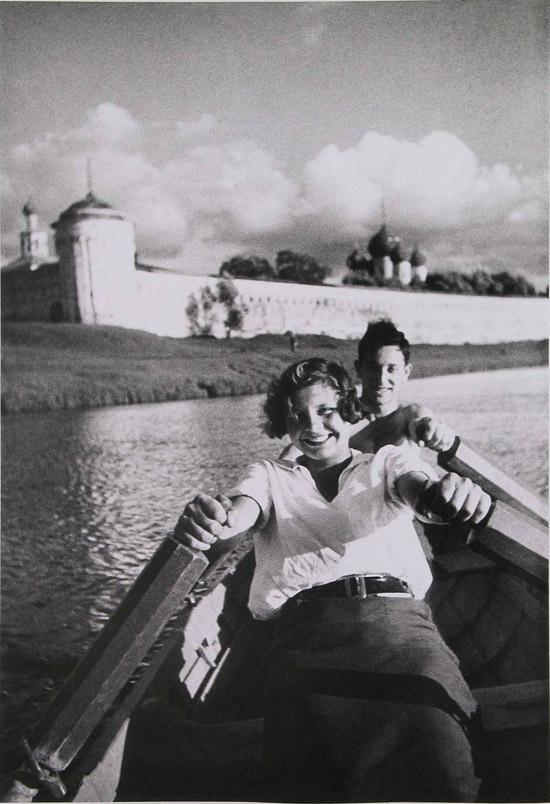
Cook, 1930.
After moving to Moscow in 1926, Markov-Grinberg started to work in the magazine "Change". Photographer traveled around the country, recorded the achievements of socialist construction, the first collective farms. Pictures of famous people as well as the usual "builders of communism».

Portrait of a miner Nikita Izotov, 1934.
Nikita Izotov in a miner's helmet, covered with coal dust, as photographed monument. Shakhtar presented as antique hero, challenging the gods, biting into the earth.
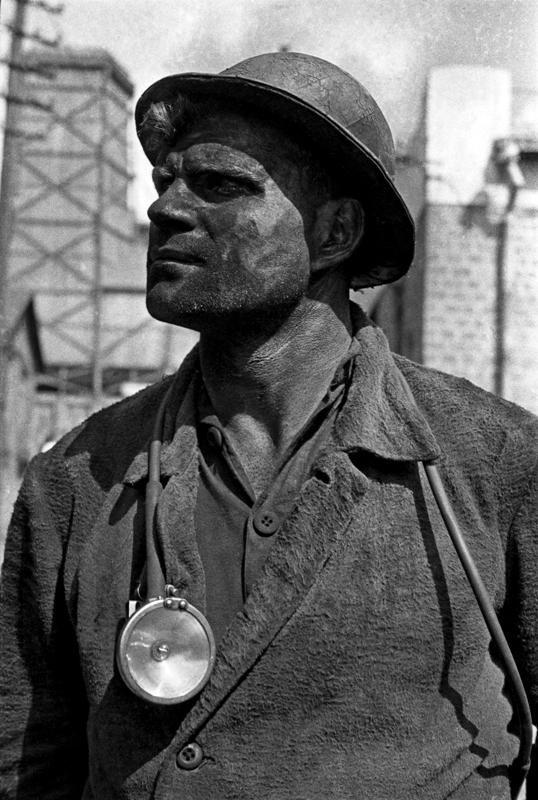
Military-sports game "Summer lightning", 1930.
In the first decades of the Soviet Union - a time of global change - in front of photographers did not attempt to remove the present. Much more important was to see in it the germs of the future that may never come true. Photographers translated ordinary prose of life into the language of the heroic epic, transforming reality.
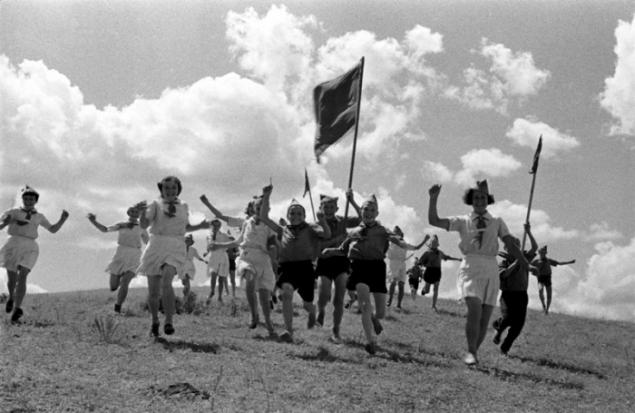
"Girl with a paddle" night in Gorky Park. Gorky, 1930.
The main task of the reporters of this era was able to convince your photos spectators in the majesty of the Soviet reality. Photos Markov-Grinberg just had such power.
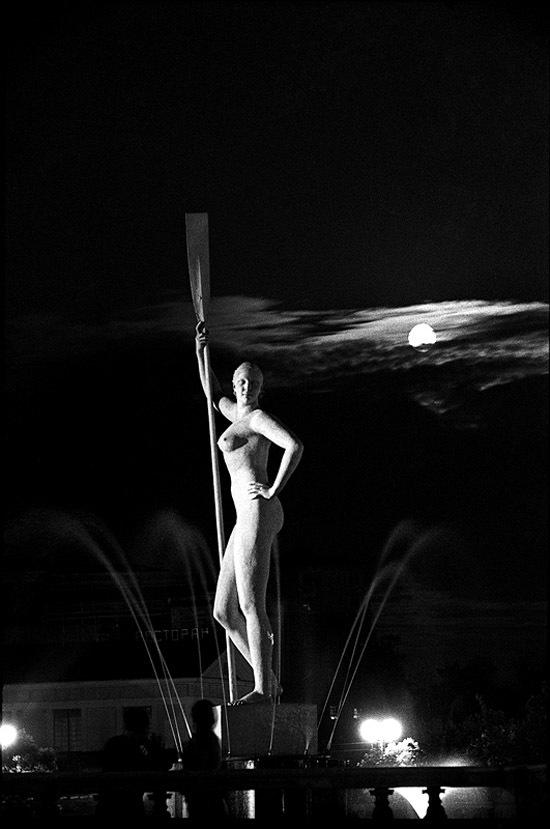
Meeting of foreign delegation at the Belarusian railway station. Tverskaya Zastava. Moscow Triumphal Gate (Arc de Triomphe), 1931.
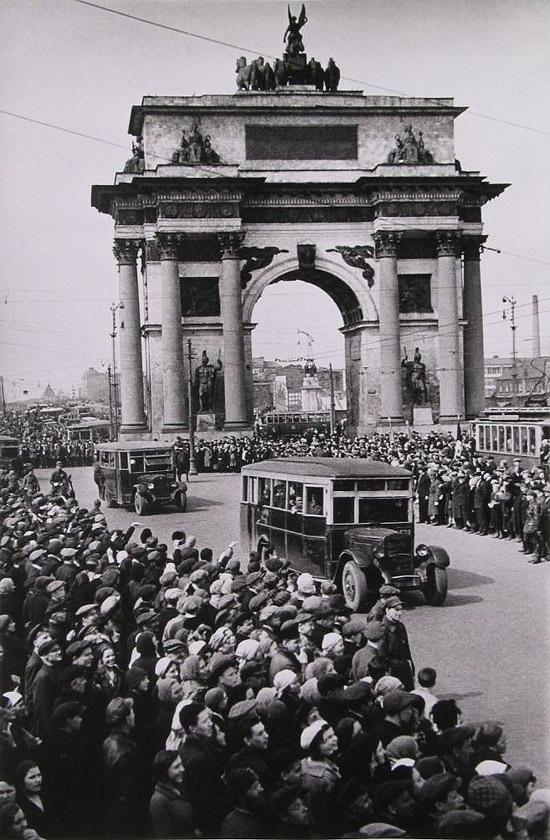
In the first air parade in Tushino, 1933.
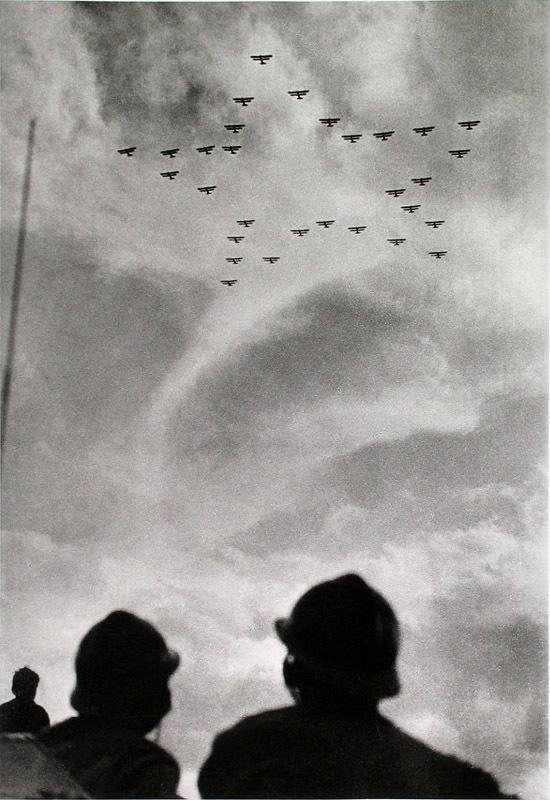
In the summer camp. Anglers, 1930.
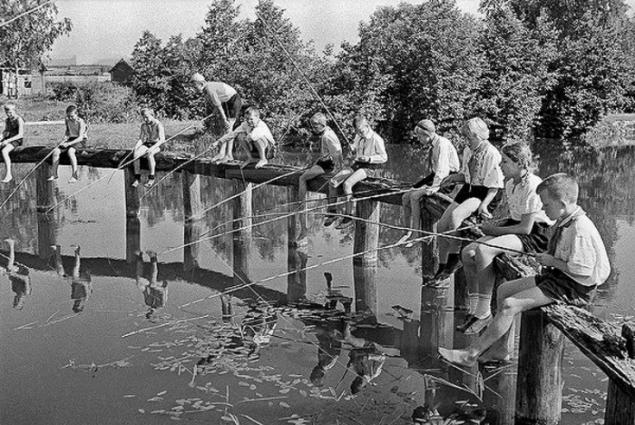
"First in the village." Kabardino-Balkaria, 1934.
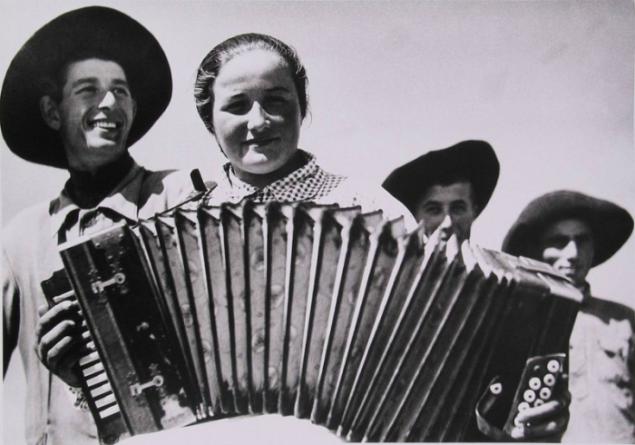
Sailing on Lake Seliger, 1930.
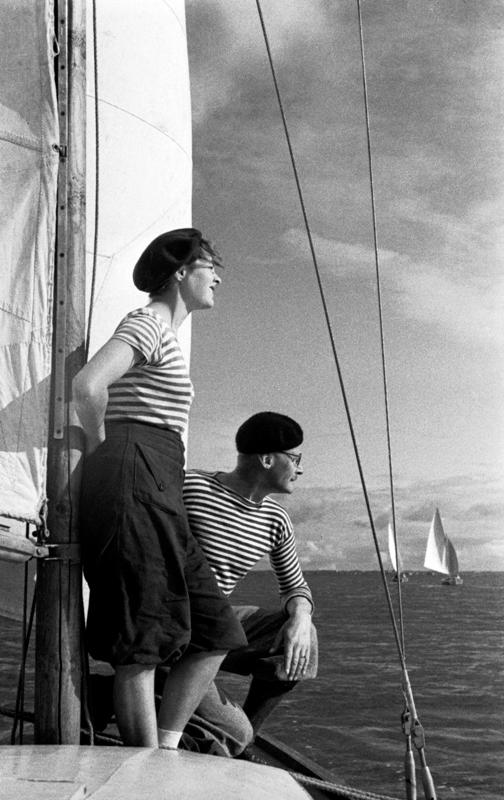
Agriculture Youth Brigade. Harvesting grain. South of Russia, 1930.
In Soviet photography reality pre-filtered and treated. Life in the picture was displayed according to a predetermined setting. At the same time she always believed, for millions of people it served as proof of what the papers say.
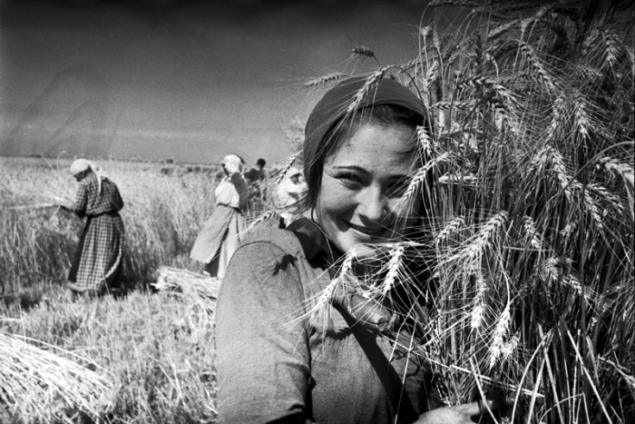
"Turn of history" (another name: "Now and forever"). Removing and installing the Eagles star on the tower of the Kremlin, 1935.
From the memoirs of the author's work on the pictures: "I Climbed the tower, on which was mounted a fairly primitive design - no present-day, taken in such cases, fences, or other safety equipment was not used. And then there's the star in the picture not included - need to get out on some bracket. It was terrible. But a little accustomed to the altitude and yet removed. However, had to make a panorama of the two lens frame 35 mm - in one frame star still did not fit ... »
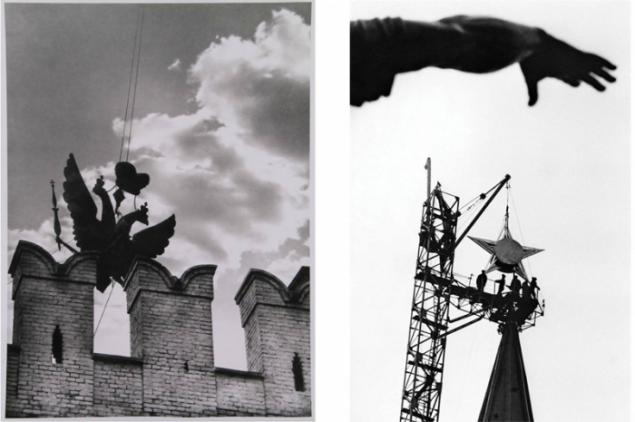
"Happy Motherhood", 1935.
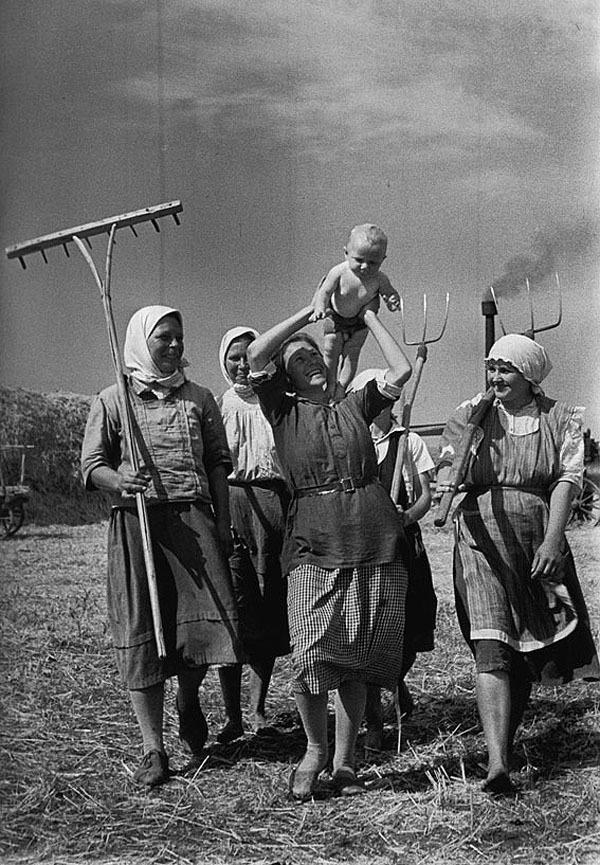
Dinamovki, 1935.

Policeman-adjuster night on Arbat Square, 1936.
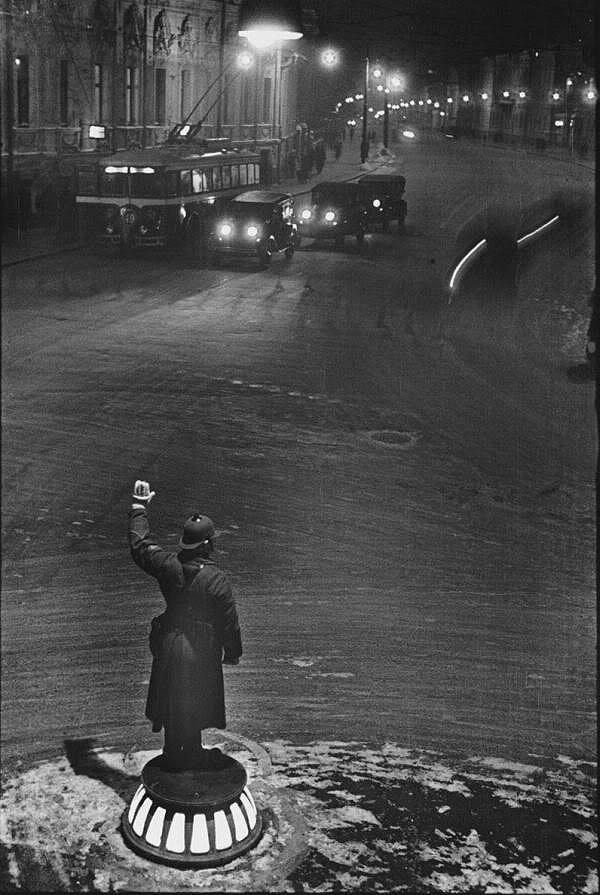
Volgar, 1939.
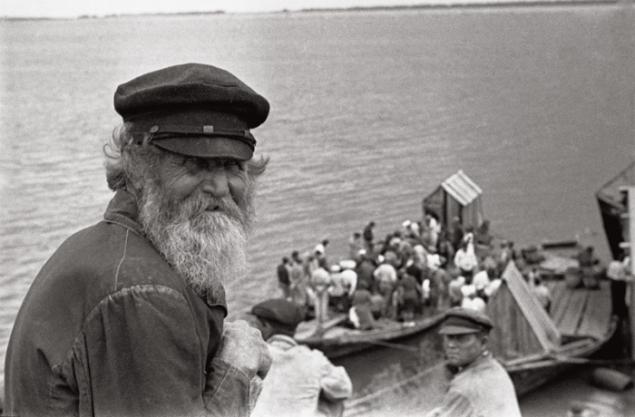
For the Motherland! 1943.
The most prominent in the work of the photographer war period. In September 1941, Markov-Grinberg was sent to the front rank and file. He participated in the battles in the role of communicator, but always photographed - fixed instant fights and rare moments of rest.
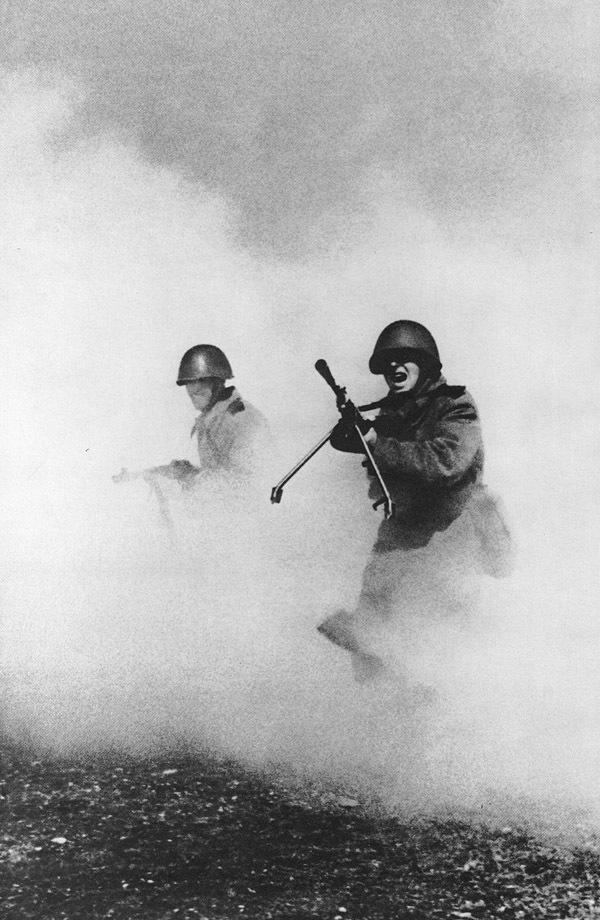
Oath warrior 1943.
In July 1943, the political department of the army sent a photographer correspondent in the army newspaper "Word fighter».

Kursk. Running-infantry tanks, 1943.
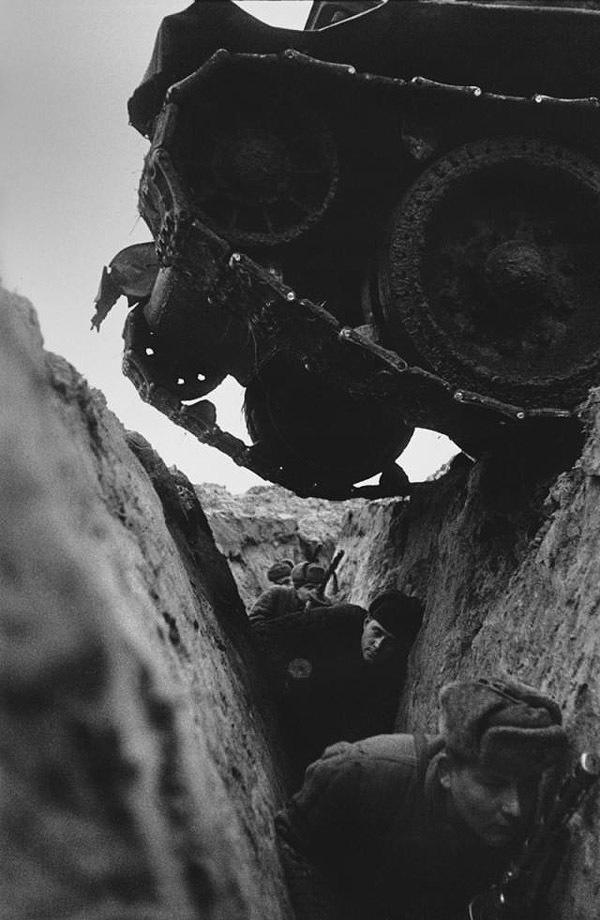
©
In the background - Trinity Monastery, caught in a flood zone in connection with the creation of the Uglich Reservoir.

Cook, 1930.
After moving to Moscow in 1926, Markov-Grinberg started to work in the magazine "Change". Photographer traveled around the country, recorded the achievements of socialist construction, the first collective farms. Pictures of famous people as well as the usual "builders of communism».

Portrait of a miner Nikita Izotov, 1934.
Nikita Izotov in a miner's helmet, covered with coal dust, as photographed monument. Shakhtar presented as antique hero, challenging the gods, biting into the earth.

Military-sports game "Summer lightning", 1930.
In the first decades of the Soviet Union - a time of global change - in front of photographers did not attempt to remove the present. Much more important was to see in it the germs of the future that may never come true. Photographers translated ordinary prose of life into the language of the heroic epic, transforming reality.

"Girl with a paddle" night in Gorky Park. Gorky, 1930.
The main task of the reporters of this era was able to convince your photos spectators in the majesty of the Soviet reality. Photos Markov-Grinberg just had such power.

Meeting of foreign delegation at the Belarusian railway station. Tverskaya Zastava. Moscow Triumphal Gate (Arc de Triomphe), 1931.

In the first air parade in Tushino, 1933.

In the summer camp. Anglers, 1930.

"First in the village." Kabardino-Balkaria, 1934.

Sailing on Lake Seliger, 1930.

Agriculture Youth Brigade. Harvesting grain. South of Russia, 1930.
In Soviet photography reality pre-filtered and treated. Life in the picture was displayed according to a predetermined setting. At the same time she always believed, for millions of people it served as proof of what the papers say.

"Turn of history" (another name: "Now and forever"). Removing and installing the Eagles star on the tower of the Kremlin, 1935.
From the memoirs of the author's work on the pictures: "I Climbed the tower, on which was mounted a fairly primitive design - no present-day, taken in such cases, fences, or other safety equipment was not used. And then there's the star in the picture not included - need to get out on some bracket. It was terrible. But a little accustomed to the altitude and yet removed. However, had to make a panorama of the two lens frame 35 mm - in one frame star still did not fit ... »

"Happy Motherhood", 1935.

Dinamovki, 1935.

Policeman-adjuster night on Arbat Square, 1936.

Volgar, 1939.

For the Motherland! 1943.
The most prominent in the work of the photographer war period. In September 1941, Markov-Grinberg was sent to the front rank and file. He participated in the battles in the role of communicator, but always photographed - fixed instant fights and rare moments of rest.

Oath warrior 1943.
In July 1943, the political department of the army sent a photographer correspondent in the army newspaper "Word fighter».

Kursk. Running-infantry tanks, 1943.

©







